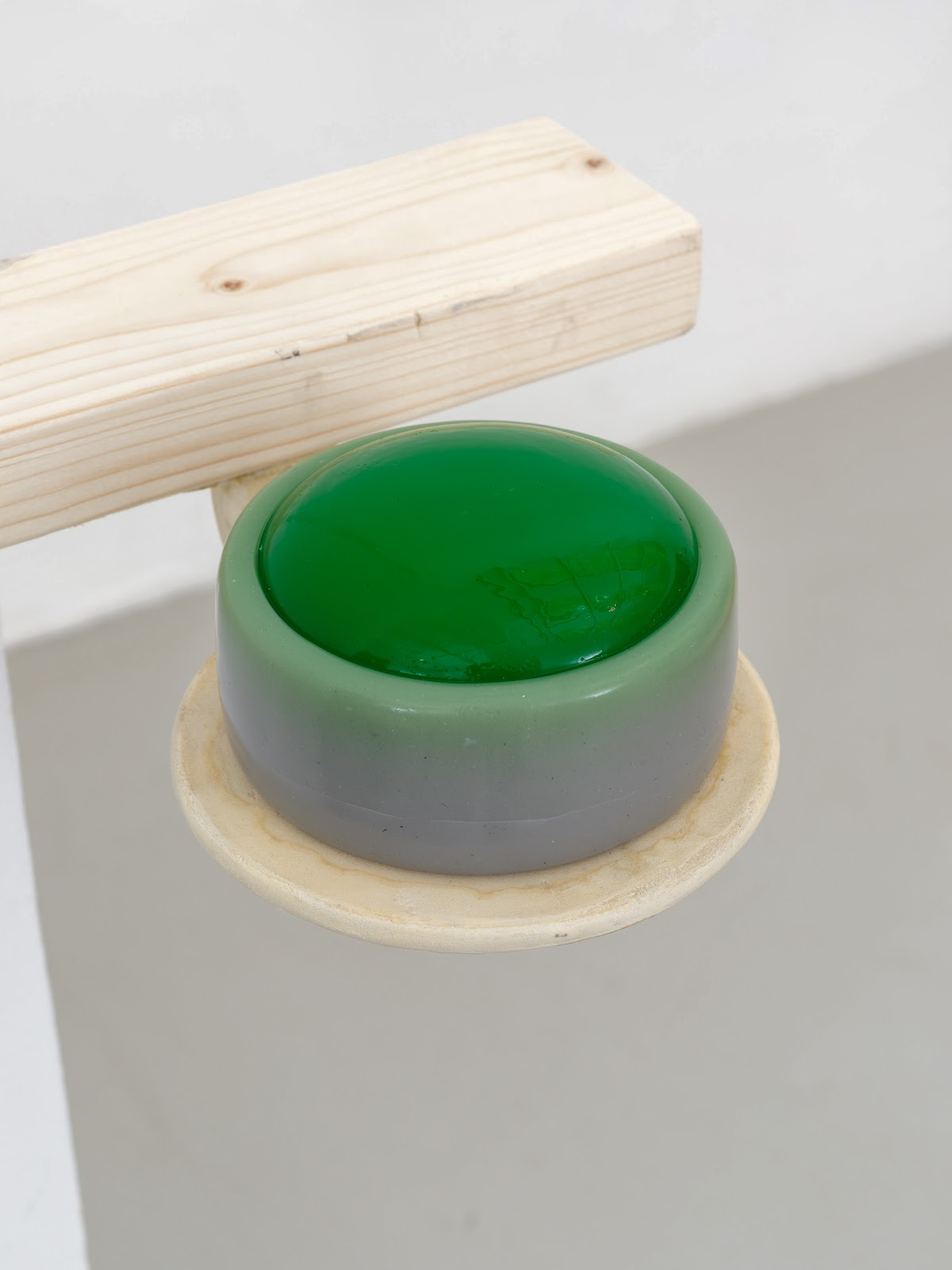Stefania Batoeva, Manuel Cornelius / Boredom is the Root of All Evil
Curator: Marina Moro
April 7 – April 16
Dovetail, London
Photographer: Daniel Browne
Dovetail is pleased to present a two-person exhibition made up of paintings by Stefania Batoeva and a sculptural series from Manuel Cornelius, mediated by a constellation of wooden structures that stretch, guide, and swing, creating a layering of figure-ground built up of strata. These outreaching strata extend as architectural support display for Cornelius’ unintelligibly utilitarian objects as well as through the layers of grounds of Batoeva’s paintings, creating occasional framings on which her figures sulk and rest.
The Rube Goldberg machine, named after an American cartoonist, utilises a chain reaction between any variety of objects set into motion to perform a simple task through multiple steps. Its overt complexity and absurdity has brought focus away from the completion of its task in favour of the chain reaction itself as an inventive path that only just functions. Objects’ proprietary functionality is adjusted towards the larger function of a composite body’s circuitry (1). As shown in Fischli and Weiss’ The Way Things Go (2), it is the unending dance of mundane objects, oftentimes utilising their forms in unexpected fashion, from one reactive performance to another that captivates an audience.
This reaction can create a misreading, crossing a point at which a simple object’s language can no longer be reliably deciphered. The plane at which the recognition of the other is broken down is the relational. Kierkegaard calls this the plane of imminence, the plane of the infinite, and the plane of faith at which the finite is constantly imparted, reimparted, and regathered. ̈Perception will no longer reside in the relation between a subject and an object, but rather in the movement serving as the limit of that relation… Perception will confront its own limit; it will be in the midst of things, throughout its own proximity, as the presence of one haecceity (3) in another, the prehension of one by the other or the passage from one to the other… ̈(4)
_______________________________________________________________________________________________________________________
1. Spinoza, Baruch. Ethics. Amsterdam, Netherlands, 1677.
2. Fischli, Peter & Weiss, David. The Way Things Go. 1987, colour video transferred from 16mm film with sound, 30 minutes, Solomon R. Guggenheim Museum, New York City.
3. Haecceity: that property or quality of a thing by virtue of which it is unique or describable i.e. thisness.
4. Guinnane, Debbie. “Planes of Immanence.” MAP 4



























